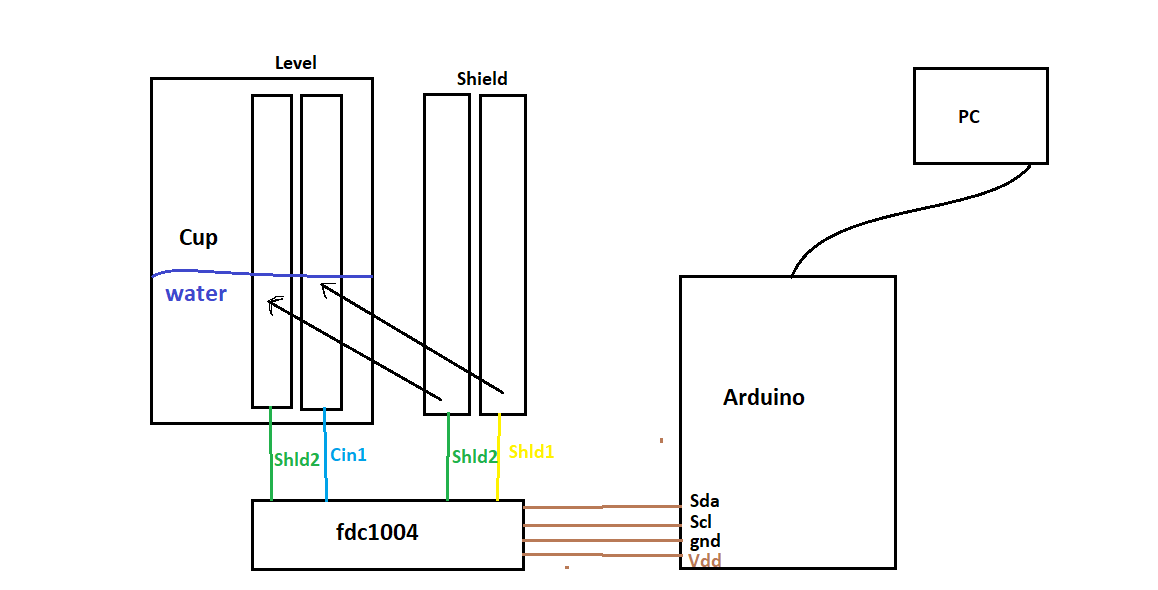Hello TI,
I have been working with the fdc1004 for a while now. I'm trying to use the liquid level sensing technique from your app-note: http://www.ti.com/lit/an/snoa925/snoa925.pdf and http://www.ti.com/lit/an/snoa958/snoa958.pdf
I have managed to get it to work so far by using your EVM GUI and I have also managed to make it work with my arduino.
My problem is that even though it works, I can't seem to figure out the shielding on the arduino. It works without problems on the EVM module through the GUI.
My setup is like this:
I use the library from Beshaya: https://github.com/beshaya/FDC1004
I can make the readings, but the shield doesn't seem to work properly. I was wondering how the shield works and why I need to connect the ground electrode to shield instead of ground as stated in the application note. Is it just a excitation signal opposite of the excitation doing the capacitive reading or do I need to add more to it. Could anyone explain how this shield works or how to apply it through my software?
Thanks in advance! :)



